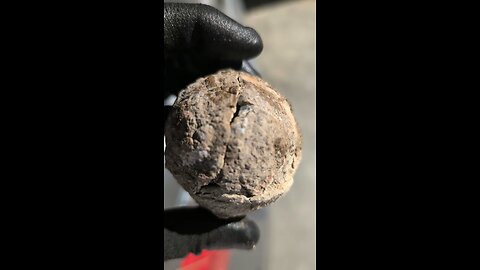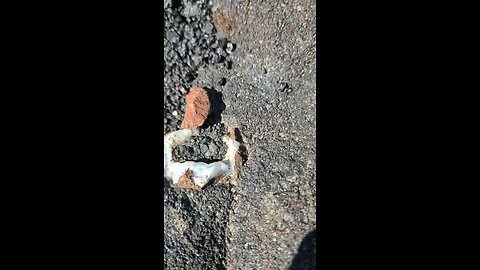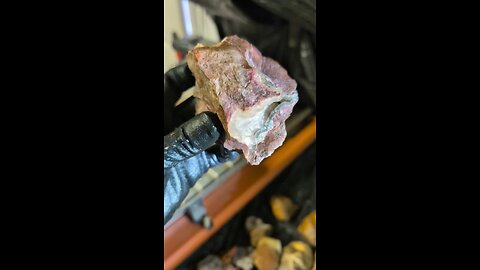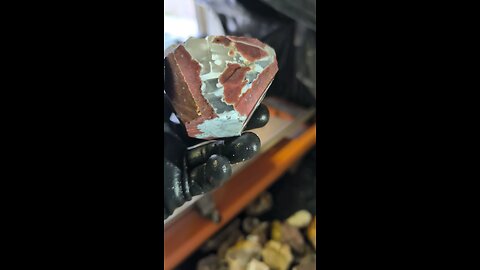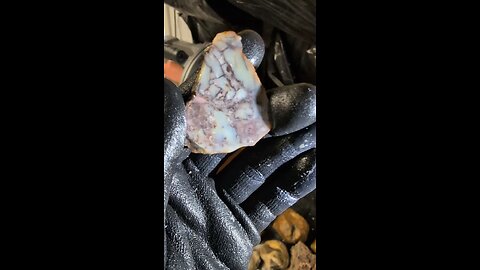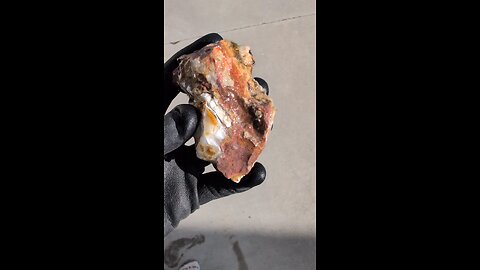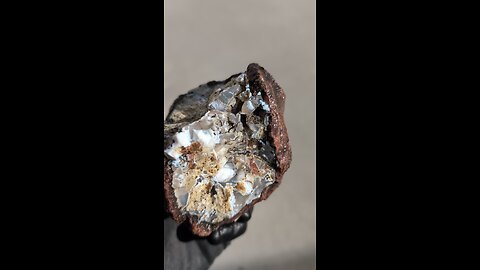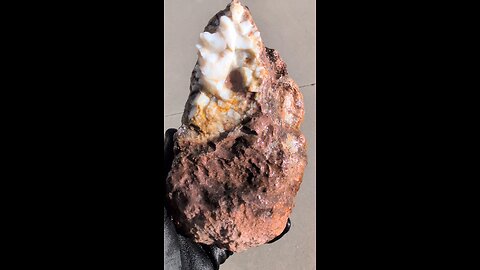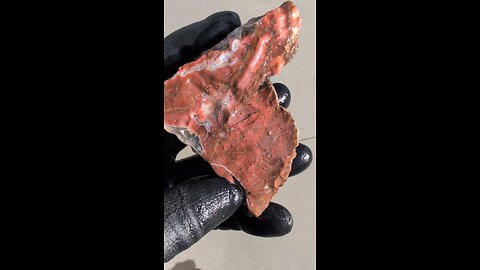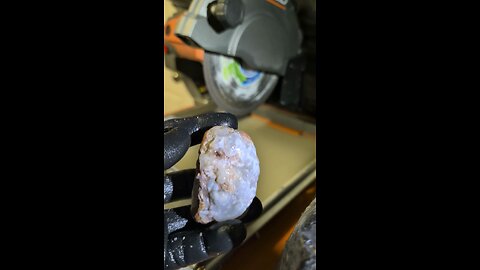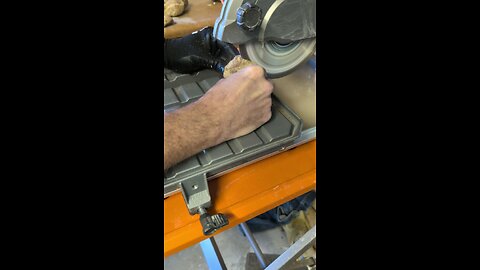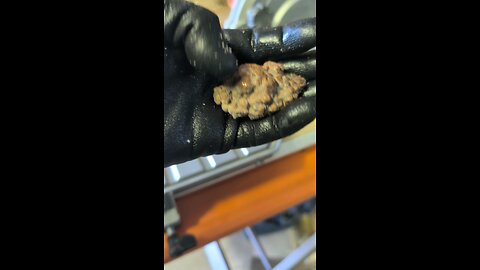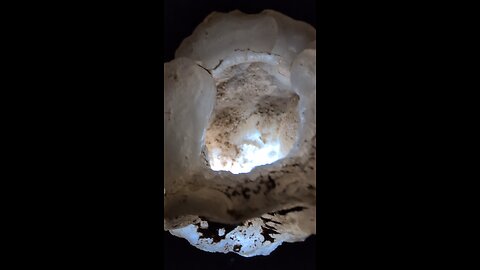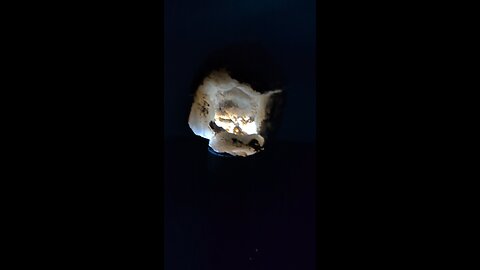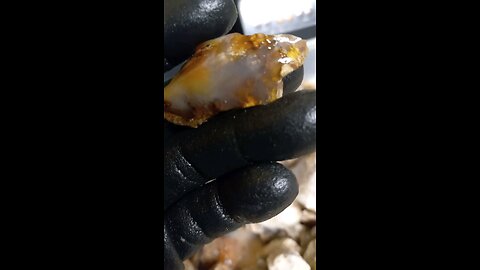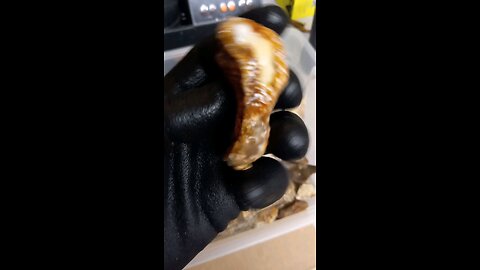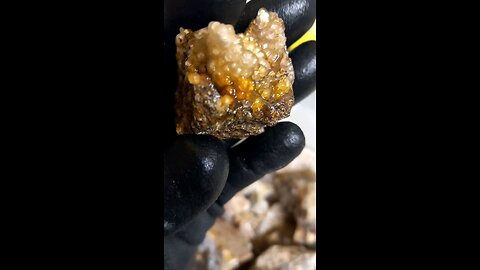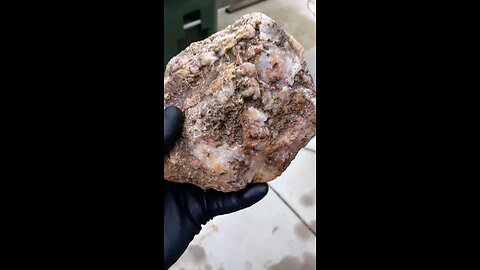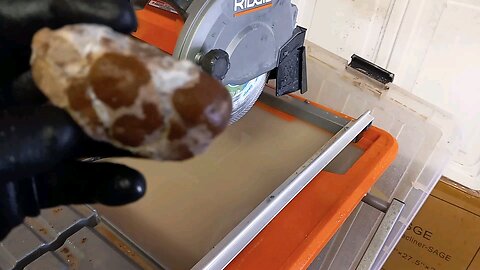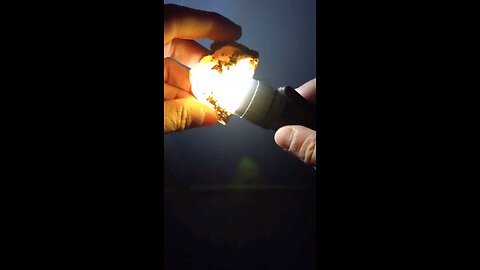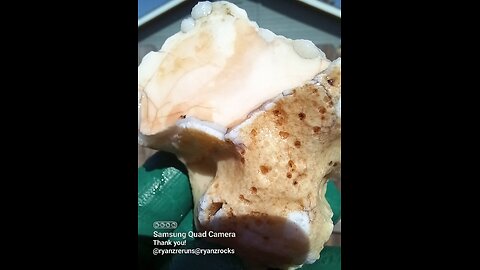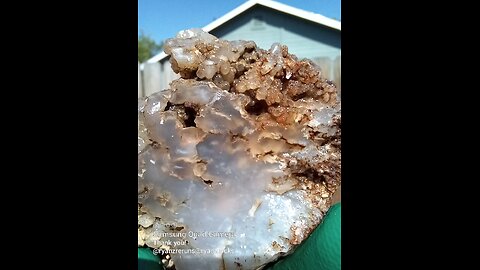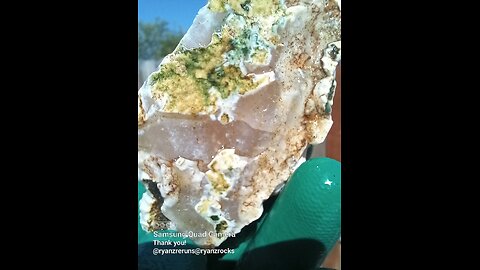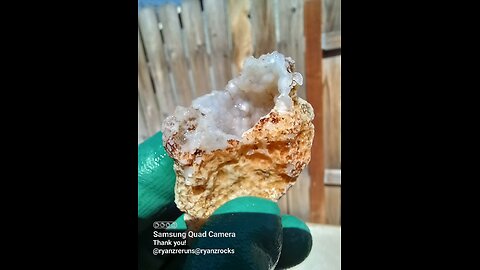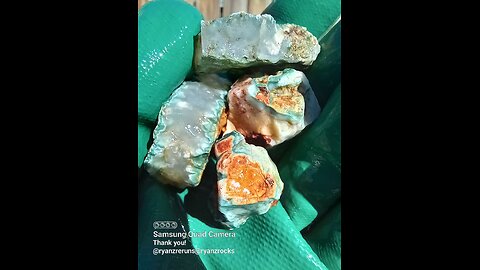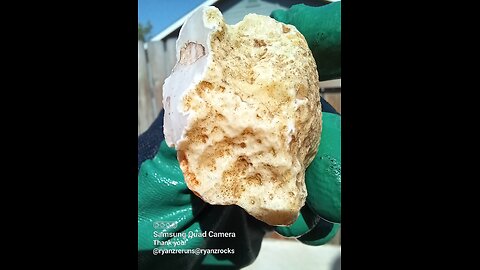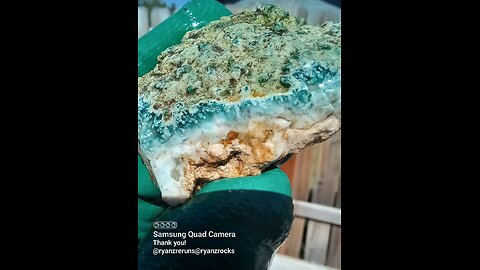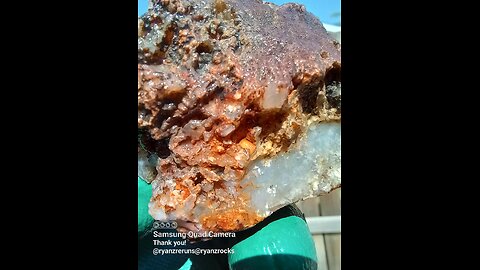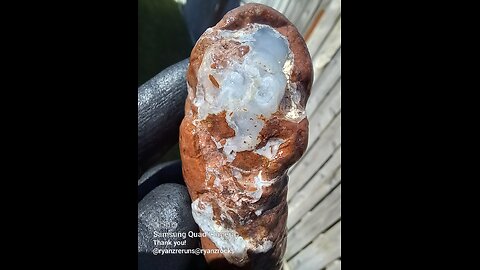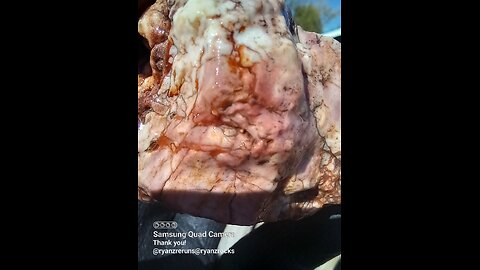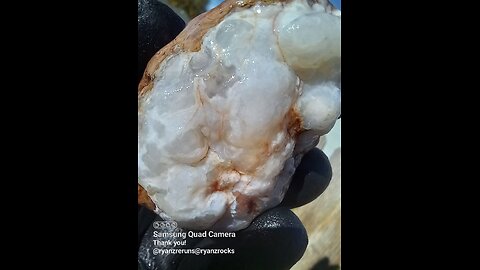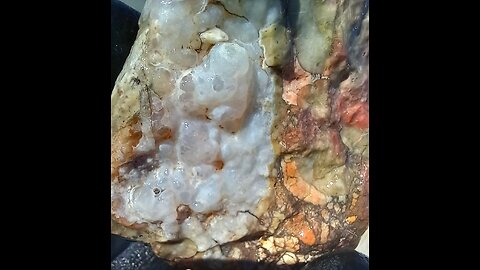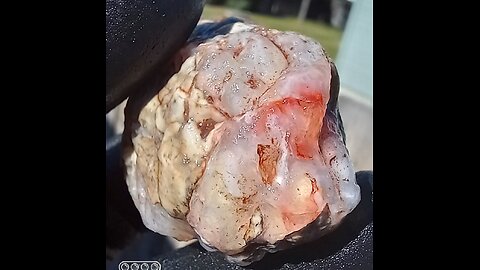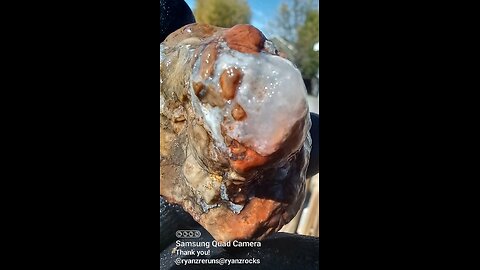Premium Only Content
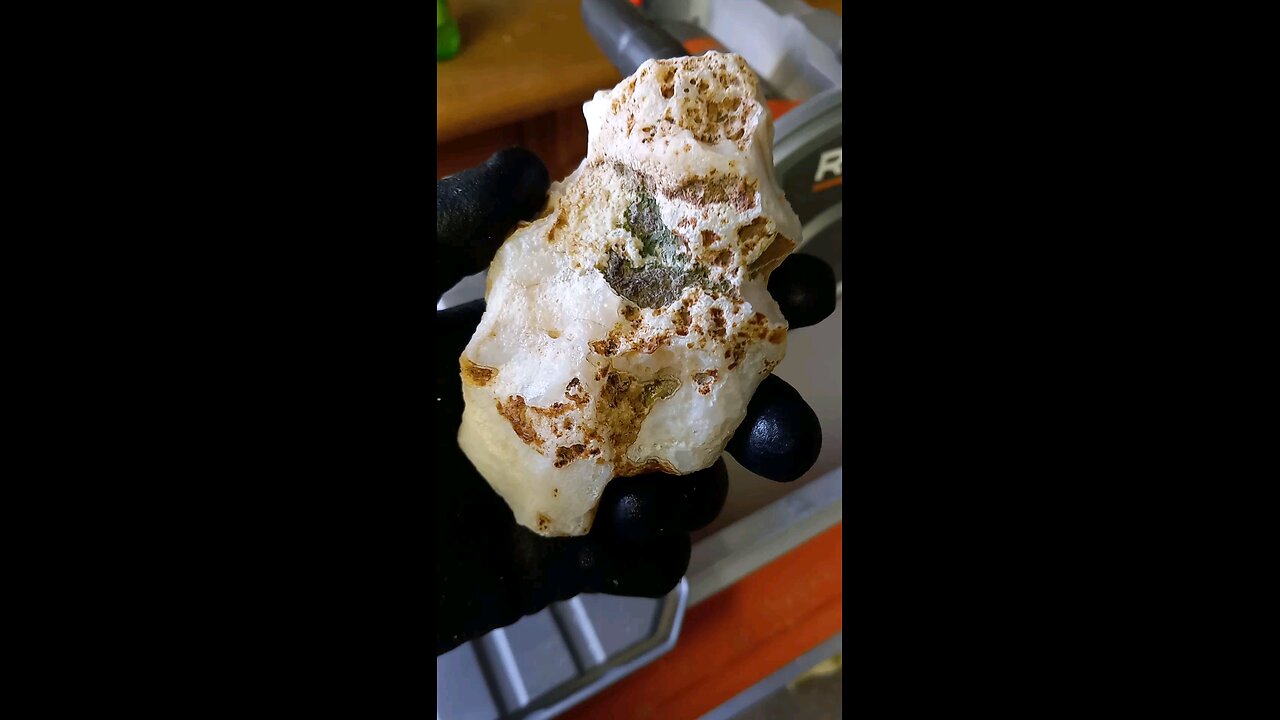
Whole & Broken Geodes!
Geode Field!
Botryoidal cut!
Shaping!
Opalized wood!
Broken Thunderegg Cluster!
Half a thunderegg!
Thunderegg Cluster w Common Opal!
Red Thunderegg Shard!
Robbed! Grabbed the wrong half!
Thunderegg Cut w/Opal!
Thundereggs?
Thundercup glow!
Thunderegg glow!
Beautiful dark opal!
It's curved!
Botryoidal formations!
Jasper, Chalcedony, Opal & ???
Chalcedony or Opal!?
Clear/White Banding!
Thunderegg twins!
Beautiful Opal Glow!
Pretty green!
Chalcedony or Opal?
Lil' bit of opal!
Opal!
Opal or Chalcedony?
Chalcedony & Jasper!
Part of a Thunderegg!?
Pinks & Reds!
Half a Thunderegg w/Opal!
Botryoital Opal w/ A Little of Everything!
Beautiful! Wait for it!!!
Thunderegg Cluster!
Clear/White Banding!
The rock in the image appears to be a type of chalcedony, possibly an agate or a similar variety. Here's why:
1. **Coloration and Banding**: The rock has a predominantly white or light gray color with some yellowish-brown inclusions. This kind of coloration and banding is typical for agates, which are a variety of chalcedony.
2. **Translucency**: Chalcedony, including agate, often has a translucent quality, which seems to be present in parts of this rock.
3. **Texture**: The rock's texture looks somewhat waxy or greasy, which is characteristic of chalcedony due to its fine-grained silica composition.
4. **Inclusions**: The yellowish-brown areas could be iron oxide or other mineral inclusions, which are common in agates and give them their varied colors. However, without specific tests like a hardness test, streak test, or chemical analysis, this identification remains speculative. For a more precise identification: - **Hardness Test**: Chalcedony has a hardness of around 7 on the Mohs scale, meaning it should scratch glass but not be scratched by a knife. - **Streak Test**: The streak of chalcedony (if it could be powdered) would typically be white or colorless. - **Microscopic Analysis**: Looking at thin sections under a microscope could reveal the mineral composition more clearly. - **Consulting a Geologist or Using Spectroscopy**: For a definitive identification, especially if this rock might be of value or scientific interest.
-
 19:26
19:26
GritsGG
1 day agoChat Picked My Hair Color! All Pink Loadout & Operator Challenge!
14.3K3 -
 10:32
10:32
Nikko Ortiz
1 day agoFunniest Fails Of The Month
49.2K6 -
 1:27:34
1:27:34
TruthStream with Joe and Scott
4 days agoArchitect Richard Gage: 911 truths and more #482
20.7K6 -
 LIVE
LIVE
Lofi Girl
2 years agoSynthwave Radio 🌌 - beats to chill/game to
198 watching -
 56:48
56:48
The HotSeat
12 hours agoI'm NOT Sorry! Guns Aren’t the Problem—Godless Culture Is
26.1K29 -
 9:43
9:43
The Pascal Show
13 hours ago $0.05 earnedWHOA! Annunciation School Sh**ter Identified... Heartbreaking & Insane
1122 -
 22:42
22:42
Liberty Hangout
8 hours agoCollege Democrats Say Gangs Are GOOD!
47.3K60 -
 2:14:50
2:14:50
Badlands Media
13 hours agoBadlands Media Fantasy Football Live Draft
40.2K -
 2:12:29
2:12:29
Inverted World Live
7 hours agoWe Are Time Travelers | Ep. 100
79.8K12 -
 2:57:09
2:57:09
TimcastIRL
7 hours agoCorporate Press Refuses To Mention Minneapolis Shooter Was Trans | Timcast IRL
187K101
